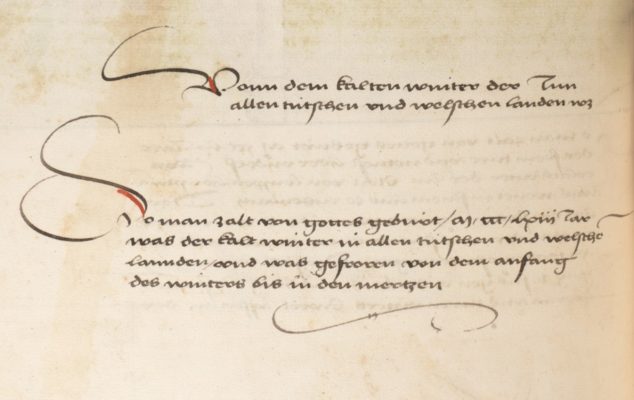
What is historical climatology?
Historical climatology is an interdisciplinary research field between paleoclimatology and the historical sciences, that explores the archives of societies to examine the climate of the past. Archives of society mean all man-made remains of the past in contrast to archives of nature. The latter represent physical remains of natural processes such as tree rings and sediments.[1] Man-made remains of the past are paintings, buildings or written documents like books, letter and accounts. In this blog post, sources, data, and methods used in historical climatology are presented herein.
Historical climatology is divided into three branches[2]: i) climate reconstructions based on historical sources which are dependent on the density and reliability of sources in a certain geographical area. In China, for instance, documentary evidence and climate reconstructions derived from it are available for a time span of about 2000 years.[3] In many parts of Europe, weather extremes are reported from the High Middle Ages (~1100) onwards, while denser data that also include information on average temperature and precipitation cannot be expected before the beginning of the Late Middle Ages (~1400) or even the Early Modern Period. On other continents such as North America, climate reconstructions derived from the archives of societies begin even later.[4]
ii) climate impacts on societies of the past. Archives of the societies often contain information on the impact on people of climate variation and extreme weather conditions. In many cases, unusual or extreme weather conditions were described because they were remarkable or even frightening to the people who observed them (imagine a year without summer or a heavy thunderstorm). Often, extreme weather events were the reason for income losses and unpaid debts. Therefore, they were reported as an excuse for the landlord or the creditor. Climate impacts on society historically comprised and still comprise weather-induced famines, including their demographic consequences, the construction and destruction of infrastructure, and coping and adaptation strategies as well as learning processes.
iii) history of knowledge about climate. This sub-discipline includes the history of weather perception and societal concepts of climate and weather as well as scientific and “popular” knowledge of weather. Additionally, the results of such branches also represent important metadata for climate reconstructions and impact studies.
What are the sources and data of historical climatology and why are they useful for paleoclimatology?
Archives of societies contain documentary evidence, which comprises written texts including early instrumental measurements, pictures, and even artefacts—actually everything that humans left.[5] Amongst the artefacts examined are flood marks and hunger stones—large stones in rivers sometimes with inscriptions indicating the year and the level of low tide during drought periods (Fig. 1). But artefacts are also larger buildings of infrastructure.[6] This infrastructure—for example bridges or dikes—can provide evidence for past flood damage and the measures taken against similar threats. Pictures, for example, show the (changing) course of rivers, the extent of glaciers, or the damage from extreme weather events. These sources include—depending on the epoch and their origin—paintings, pictures in handwritten medieval books, pictures of settlements or glaciers (Fig. 2), drawn plans of infrastructure buildings and riverbeds, and photographs. This type of evidence is very precious, for example, when long-term changes in settlements are analysed. Another important purpose is the exact location of certain buildings described in written texts in the context of damage through extreme weather events such as floods. Of course, pictures can also contribute to a better understanding of past perceptions of weather and weather-related phenomena.[4]
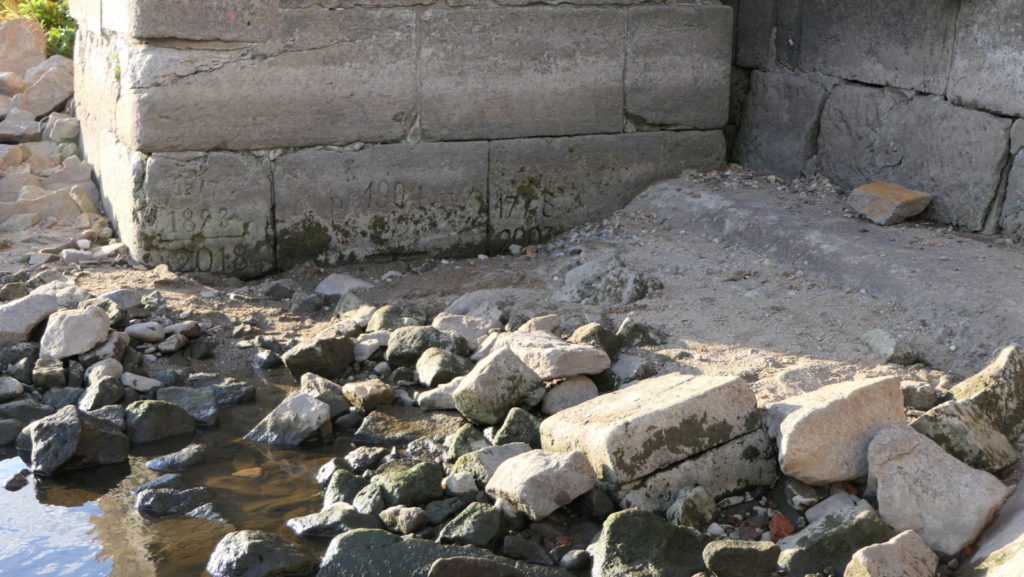
Figure 1: Example of an artefact: Hunger stone in Pillnitz (Dresden); engraved low-tide level marks at the pedestal of the perron of Pillnitz Castle. Photograph by Dr. Bernd Gross, CC BY-SA 3.0.
The major part of the sources used in historical climatology are written texts. Through the course of the centuries, these sources changed considerably, and with this also the challenges for using the information derived from them. A large part of such sources was written in ancient languages. In Europe, many texts of the Middle Ages and the Early Modern Period are preserved on paper or parchment in Latin or very old versions of regional dialects. Moreover, the scriptures experienced a noticeable evolution (Fig. 3) and for a modern eye they are often not easy to read. Only a minor part of these sources was ever transcribed and printed in modern edited versions. This means that historical climatologists spend a large part of their research time in historical archives.
Different types of written sources are available. For example, narrative texts such as chronicles, town histories or memoires often contain weather data. In many cases, the reason for such texts was the wish to record the memories of the author(s). Other sources have an administrative background and usually a specific purpose linked to the bookkeeping of an institution or family. Administrative sources are often produced in series (e.g. an annual account). As mentioned, weather descriptions are sometimes used as an excuse for lowered income. Moreover, charters, edicts, decrees, and orders issued by authorities can contain weather data.[7] However, weather descriptions are not the main purpose of all these examples.
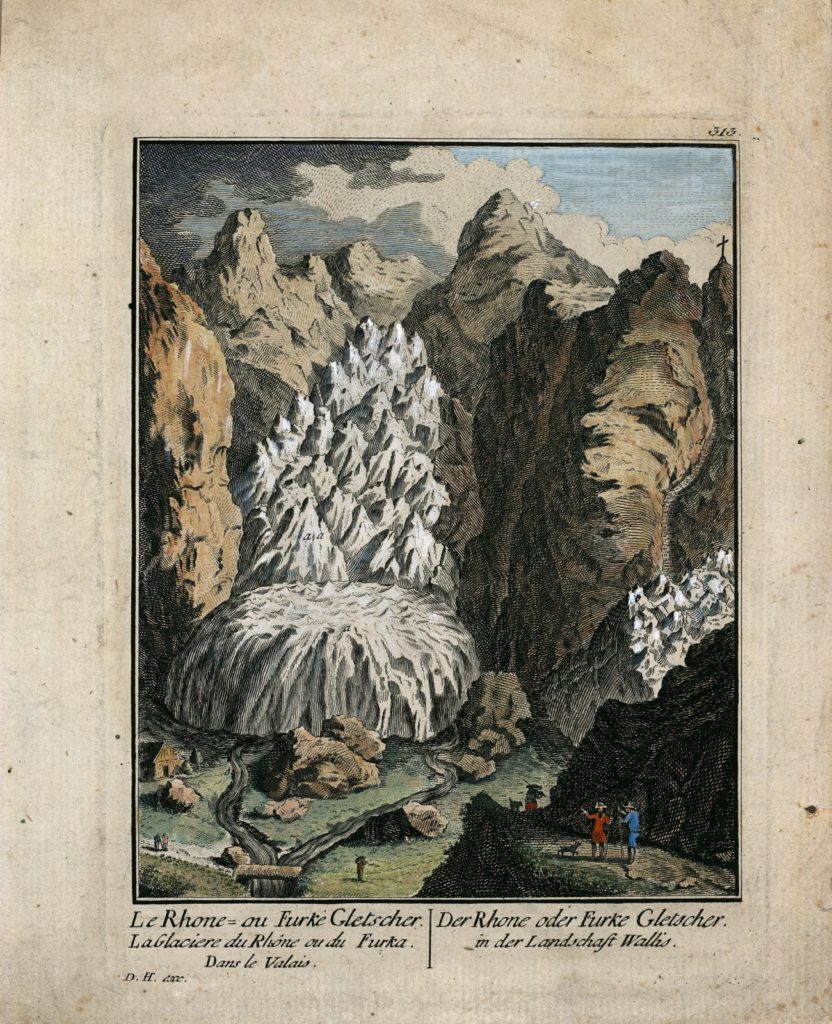
Figure 2: Example of pictorial source: The Rhone Glacier, ca. 1760. ETH-Bibliothek Zürich, Bildarchiv, Hs_1458-GK-B001-0000-02 / Public Domain Mark.
A special case are weather diaries and early instrumental observations. Such sources were specifically made to record weather conditions. Early examples, like the weather diary of the English monk Robert Merle, date back to as early as the 14th century. In other parts of Europe, these weather diaries appear more regularly from the 16th century onwards (Fig. 4).[8] Records of early instrumental observations are very precious sources for historical climatology. However, similar to all other source types, these instrumental records also need a set of special skills to explore them. Again, the used scriptures can pose a problem, but also problematic is the fact that temperature, precipitation, air pressure, etc. might be measured in units often used only by one single observer. As no standardized procedures existed yet, it is important to identify the setting of the instruments but also the protocol of the measurement (did the observer always take the temperature at the same time of the day, e.g. always at sunrise?). In addition, it will be necessary to calibrate the early instrumental series with modern series.[9]
Apart from (early) instrumental observations, data in documentary evidence appear either in a descriptive form or as climate proxy. In many cases descriptions focus on extreme weather events, but regularly noted average weather descriptions are also common. Proxy data in documentary evidence are observed features of the cryosphere (e.g. dates of appearance and disappearance of ice on water bodies, snowfall, duration of the snow cover), hydrosphere (e.g. water levels of rivers or lakes), or biosphere (e.g. date of blooming, ripening, and harvesting of plants and other stages of vegetation).[5]
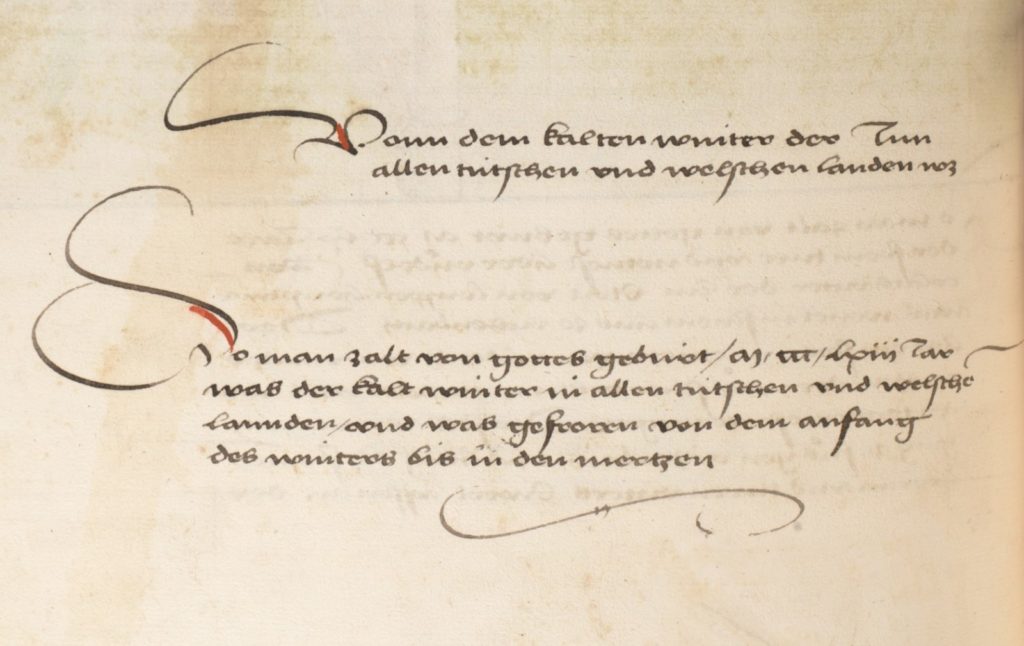
Figure 3: Example of a written source: Diebold Schilling (ca. 1445–ca. 1486), Spiezer Chronik. Bern, Switzerland, Burgerbibliothek, Mss.h.h.I.16, p. 366. http://www.e-codices.ch/de/bbb/Mss-hh-I0016/366/0/Sequence-50.
Original text: «Vonn dem kalten winter, der inn allen tútschen und welschen landen wz.
Do man zalt von gotteβ gebúrt MCCCLXiii jar, waβ der kalt winder in allen tútschen und welschen lannden; und waβ gefroren von dem anfang deβ winterβ biβ ȋn den mertzen.»Translation: Of a cold winter that occurred in all German and French countries.
In the year 1363 of the birth of our Lord, a very cold winter occurred in the German and French countries; and there was frost from the beginning of the winter until March.
What methods are applied in historical climatology?
climate indices is possible. These indices do not show exact temperatures or precipitation but classify seasons, months, or other time spans by comparison with a certain scale. Widely used is a seven-degree scale proposed by Christian Pfister (for temperature reconstructions, e.g. -3=extremely cold, -2=very cold, -1=cold, 0=average, 1=warm, 2=very warm, 3=extremely warm). The advantage of this method is that different source types and data can be combined, and that the analyser can adapt the time scale and the number of degrees of the scale to the source density. This means, for example, that a high density of sources enables monthly seven-degree indices while a low source density only allows three-degree half-year indices.
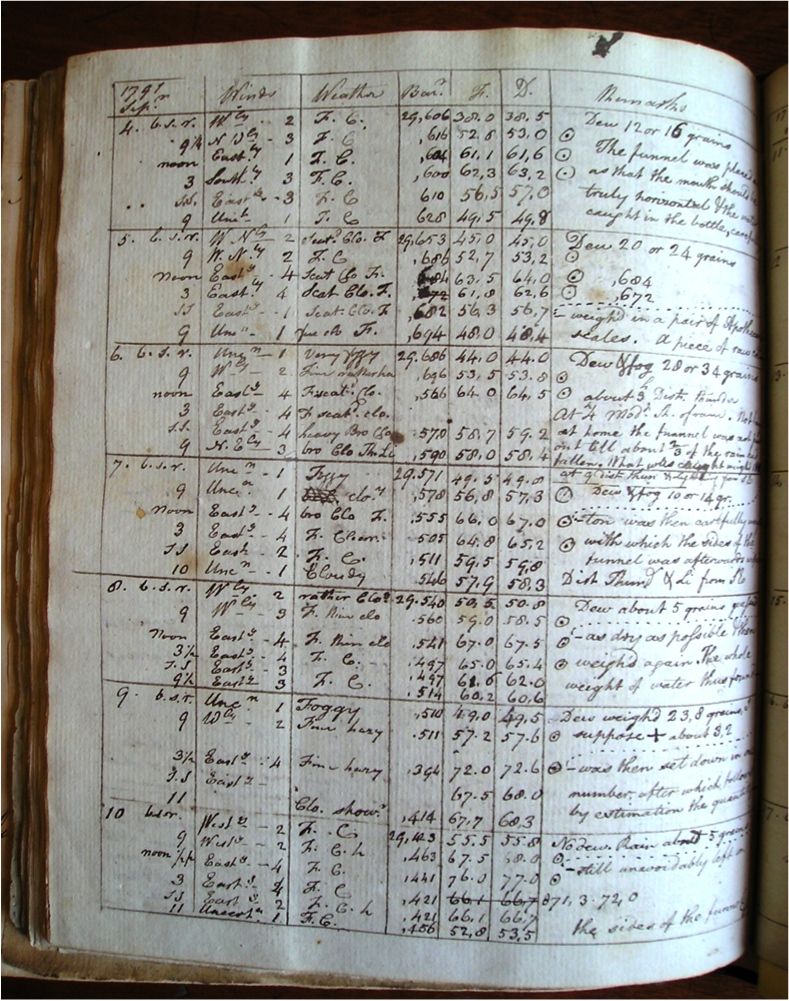
Figure 4: Example of a weather diary: The Meteorological Journal of William Dawes. Photograph by Joelle Gergis.
If proxy data appear in series, for example in administrative account books, it is possible to convert them to temperature or precipitation series. For this purpose, it is necessary to calibrate and verify them with modern series of the same proxy and the respective temperature or precipitation series.
Maybe a final question: is historical climatology in competition with other fields of paleoclimatology? No, of course not. But it is an advantage to combine different proxies to get more precise and more comprehensive climate reconstructions, as shown in a number of existing studies.[10] The field of historical climatology is especially able to contribute with precise seasonal, monthly and often daily climate reconstructions. It is also an advantage that we can reconstruct all four seasons and detect extreme weather events as well as natural disasters.
This post has been edited by J. Bösken, G. Messori, and C. Nehme.
REFERENCES [1] Brönnimann, S., Pfister, C., White, S. (2018) ‘Archives of Nature and Archives of Societies’ In: White, S., Pfister, C., Mauelshagen, F. (eds.) (2018) ‘The Palgrave Handbook of Climate History’. London: Palgrave Macmillan, pp. 27–36. [2] Mauelshagen, F. (2010) ‘Klimageschichte der Neuzeit, 1500–1900.’ Darmstadt: Wissenschaftliche Buchgesellschaft. [3] Ge, Q., Hao, Z., Zheng, J., and Liu, Y. (2018) ‘China: 2000 Years of Climate Reconstruction from Historical Documents.’ In: White, S., Pfister, C., Mauelshagen, F. (eds.) (2018) ‘The Palgrave Handbook of Climate History’. London: Palgrave Macmillan, pp. 189–201. [4] White, S. (2017) ‘A Cold Welcome. The Little Ice Age and Europe’s Encounter with North America.’ Cambridge, Massachusetts: Harvard University Press. [5] Brázdil, R., Pfister, C., Wanner, H., von Storch, H., and Luterbacher, J. (2005) ‘Historical Climatology in Europe—The state of the art.’ Climatic Change, 70 pp. 363–430. [6] Rohr, C. (2008) ‘Extreme Naturereignisse im Ostalpenraum. Naturerfahrung im Spätmittelalter und am Beginn der Neuzeit.’ (Umwelthistorische Forschungen 4) Köln: Böhlau. [7] Rohr, C., and Camenisch, C. (2020) ‘Umwelt- und Klimageschichte in der Schweiz, 1350–1850’. In: SPM. Die Schweiz vom Paläolithikum bis zum frühen Mittelalter VIII. Die Schweiz in Spätmittelalter und früher Neuzeit, in press. [8] Pfister, C., Brázdil, R., Glaser, R., et al. (1999) ‘Daily Weather Observations in Sixteenth-Century Europe.’ Climatic Change, 43 pp. 111–150. [9] Camuffo, D. (2018) ‘Evidence from the Archives of Societies: Early Instrumental Observations.’ In: White, S., Pfister, C., and Mauelshagen, F. (eds.) (2018) ‘The Palgrave Handbook of Climate History’. London: Palgrave Macmillan, pp. 83–92. [10] Glaser, R. (2013) ‘Klimageschichte Mitteleuropas. 1200 Jahre Wetter, Klima, Kathastrophen.’ 3rd edition, Darmstadt: Primus; Camenisch, C., Keller, K., Salvisberg, M., et al. (2016) ‘The 1430s: A Cold Period of Extraordinary Internal Climate Variability during the Early Spörer Minimum with Social and Economic Impacts in North-Western and Central Europe.’ Climate of the Past, 12 pp. 2107–2126.
